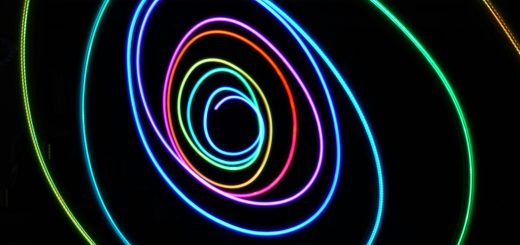What Is the Current Time in Spain?

Hey there, amazing readers! 🖐️ Just a quick note: yes, we know there are a lot of ads here. Trust us, we get it—it’s not the prettiest look, but they help us keep this blog alive and kicking. Those pesky little ads cover the costs of all the behind-the-scenes magic, from hosting and tech stuff to creating content we hope you’ll love.
We’re committed to delivering quality posts, and your support (even just sticking around despite the ads) means everything to us. So, bear with us, and thanks for helping us keep the good vibes rolling. Now, on to the fun stuff! 😉
TRANSLATE BUTTON AT THE END OF THE ARTICLE
Introduction
Have you ever stopped and wondered, “What time is it in Spain right now?” It’s a fair question, especially if you’re planning a trip, trying to schedule a call, or just daydreaming about Spanish siestas.
Time in Spain can be a little tricky to figure out because of its quirks, multiple time zones, and seasonal shifts.
Let’s dive into the nitty-gritty of how time works in this vibrant country.
Understanding Spain’s Time Zones
Spain operates primarily on Central European Time (CET), which is one hour ahead of Coordinated Universal Time (UTC+1).
However, the Canary Islands have their own time zone—Western European Time (WET), or UTC+0.
This means there’s usually a one-hour difference between mainland Spain and the Canary Islands.
Mainland Spain, including cities like Madrid, Barcelona, and Seville, runs on CET.
The Canary Islands, such as Tenerife and Gran Canaria, operate on WET.
Daylight Saving Time in Spain
Spain observes daylight saving time (DST), which can add another layer of confusion.
The clocks “spring forward” by one hour in late March and “fall back” in late October.
Here’s how it works:
During DST (late March to late October), mainland Spain shifts to Central European Summer Time (CEST), UTC+2.
The Canary Islands move to Western European Summer Time (WEST), UTC+1.
This adjustment is meant to make better use of daylight, but it’s always good to double-check the time during these transitional periods.
Why Spain’s Time Zone Is Unique
Historically, Spain was aligned with Greenwich Mean Time (GMT), just like the United Kingdom and Portugal.
However, during World War II, Spain’s dictator Francisco Franco shifted the clocks to CET to align with Nazi Germany.
The change was never reversed, which is why Spain’s time zone doesn’t naturally match its geographical location.
This has led to some interesting quirks, like the famously late Spanish mealtimes.
Lunch at 2 p.m. and dinner at 9 p.m. or later?
Totally normal in Spain!
How to Check the Current Time in Spain
In our digital age, finding the current time in Spain is a breeze.
Here are some easy ways to stay updated:
Use your smartphone’s world clock feature.
Google “current time in Spain,” and you’ll get an instant answer.
Check international meeting platforms like Zoom or Teams, which often adjust for time zones automatically.
Travel Tips for Managing Time in Spain
Traveling to Spain?
Here are some practical tips to keep your schedule running smoothly:
Adjust your watch upon arrival: If you’re flying into mainland Spain, set it to CET.
For the Canary Islands, use WET.
Plan for late schedules: Spanish culture operates on a slightly delayed timeline compared to many other countries.
Restaurants, shops, and nightlife all start later.
Mind the siesta: In smaller towns, many businesses close in the afternoon (around 2 p.m. to 5 p.m.), so plan your activities accordingly.
Spain’s Time in Relation to Other Countries
Let’s compare Spain’s time to a few key locations around the world to help you plan:
| Country/City | Time Difference from CET | Time Difference from WET |
|---|---|---|
| New York, United States | -6 hours | -5 hours |
| London, United Kingdom | -1 hour | 0 hours |
| Sydney, Australia | +9 hours | +10 hours |
This table can come in handy when organizing calls or flights!
Fun Facts About Time in Spain
Spaniards often greet each other with “¿Qué hora es?” (What time is it?), a casual way to confirm the time.
The tradition of the siesta, while not as common in big cities, is deeply rooted in Spain’s rural areas and farming history.
Spain’s time difference adds a unique twist to celebrating New Year’s Eve.
In the Canary Islands, the clock strikes midnight an hour later than on the mainland!
Common Misconceptions About Spain’s Time
Some people assume Spain’s time zone matches Portugal or the United Kingdom because of its geography, but that’s not the case.
Others think all of Spain shares the same time, forgetting the Canary Islands’ separate time zone.
Always double-check to avoid confusion!
What Happens When You Forget the Time Difference
Let me tell you a quick story: a friend of mine once planned a video call with someone in Spain, assuming it was the same time zone as Portugal.
Long story short, she ended up waking up an hour too early.
Lesson learned!
Why Time Matters in Spain
From catching trains to enjoying flamenco shows, knowing the right time is key to making the most of your Spanish adventure.
Plus, no one wants to miss out on churros con chocolate because they showed up too early (or too late).
Conclusion
So, what time is it in Spain?
The answer depends on where you are and the time of year, thanks to its dual time zones and daylight saving adjustments.
Whether you’re planning a trip, coordinating with friends, or just curious, keeping track of Spain’s time has never been easier.
Now that you’re a pro on Spanish time, what’s next?
Maybe planning your next Spanish escapade or learning some handy phrases?
Whatever it is, time is on your side—especially now that you know how it works in this fascinating country!

The Enlightenment Journey is a remarkable collection of writings authored by a distinguished group of experts in the fields of spirituality, new age, and esoteric knowledge.
This anthology features a diverse assembly of well-experienced authors who bring their profound insights and credible perspectives to the forefront.
Each contributor possesses a wealth of knowledge and wisdom, making them authorities in their respective domains.
Together, they offer readers a transformative journey into the realms of spiritual growth, self-discovery, and esoteric enlightenment.
The Enlightenment Journey is a testament to the collective expertise of these luminaries, providing readers with a rich tapestry of ideas and information to illuminate their spiritual path.
Our Diverse Expertise 🌟
While our primary focus is on spirituality and esotericism, we are equally passionate about exploring a wide range of other topics and niches 🌍📚. Our experienced team is dedicated to delivering high-quality, informative content across various subjects ✨.
To ensure we provide the most accurate and valuable insights, we collaborate with trusted experts in their respective domains 🧑🏫👩🏫. This allows us to offer well-rounded perspectives and knowledge to our readers.
Our blog originally focused on spirituality and metaphysics, but we’ve since expanded to cover a wide range of niches. Don’t worry—we continue to publish a lot of articles on spirituality! Frequently visit our blog to explore our diverse content and stay tuned for more insightful reads.




















